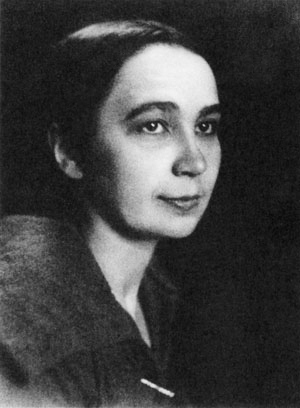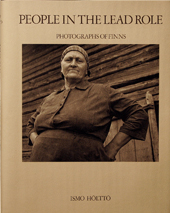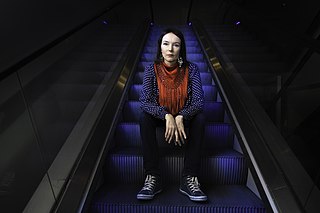Related Research Articles

Joseph Nicéphore Niépce was a French inventor and one of the earliest pioneers of photography. Niépce developed heliography, a technique he used to create the world's oldest surviving products of a photographic process. In the mid-1820s, he used a primitive camera to produce the oldest surviving photograph of a real-world scene. Among Niépce's other inventions was the Pyréolophore, one of the world's first internal combustion engines, which he conceived, created, and developed with his older brother Claude Niépce.

Natalia Sergeevna Goncharova was a Russian avant-garde artist, painter, costume designer, writer, illustrator, and set designer. Goncharova's lifelong partner was fellow Russian avant-garde artist Mikhail Larionov. She was a founding member of both the Jack of Diamonds (1909–1911), Moscow's first radical independent exhibiting group, the more radical Donkey's Tail (1912–1913), and with Larionov invented Rayonism (1912–1914). She was also a member of the German-based art movement Der Blaue Reiter. Born in Russia, she moved to Paris in 1921 and lived there until her death.

Olga Vladimirovna Rozanova was a Russian avant-garde artist painting in the styles of Suprematism, Neo-Primitivism, and Cubo-Futurism.

Ismo Olavi Hölttö is a Finnish documentary photographer known for his monochrome portraits of Romani people and others living in the cities and countryside of Finland in the 1960s, a time of rapid societal change.

The Helsinki School was a name introduced in an article by Boris Hohmeyer, Aufbruch im hohen Norden, in Art Das Kunstmagazin in 2003. This was the first time it was used as a brand name to describe a selection of artists who had studied under adjunct professor Timothy Persons at the University of Art & Design in Espoo from the beginning of 1990s. So far, with over a 180 international publications, the Helsinki School represents a collaborative approach, where students of photography, not only work together by presenting each other's works but, exhibit with their professors, mentors and former alumni in a joint effort to share in mutual contextual dialogue that uses the photographic process as a tool for thinking.
Viktor Ferdinand Brotherus was a Finnish botanist who studied the mosses (Bryophyta). He is best known for authoring the treatment of 'Musci' in Engler and Prantl's Die Naturlichen Pflanzenfamilien.

Alli Hagar Olsson was a Swedish-speaking Finnish writer, literary critic, playwright and translator.
The Niépce Prize has been awarded annually since 1955 to a professional photographer who has lived and worked in France for over 3 years and is younger than 50 years of age. It was introduced in honour of Joseph Nicéphore Niépce by Albert Plécy and Paul Almásy for the l'Association Gens d'Images.
Nordic art is the art made in the Nordic countries: Denmark, Faroe Islands, Finland, Iceland, Norway, Sweden, and associated territories. Scandinavian art refers to a subset of Nordic art and is art specific for the Scandinavian countries Denmark, Sweden and Norway.
Heli Rekula is a Finnish photographer and video maker. She is a member of "The Helsinki School" of photography.

Wendla Irene Soldan-Brofeldt, known as Venny was a Finnish painter, illustrator, graphic artist, wood sculptor and jewelry designer. She belonged to the Swedish speaking population of Finland.

Marja Helander is a Finnish urban Sámi photographer, artist and filmmaker.

Margot Pilz is an Austrian visual artist and a pioneer of conceptual and digital art in Austria. She was one of the first Austrian artists to combine computers and photography. Her works reflect the avant-garde culture of the 1960s and 1970s in their experimental techniques and performative aspects. Her work received renewed attention in the 2010s.

Katherine Araniello was a London-based live art, performance and video artist, who responded to the negative representation of disability. She used a range of mediums including film, large scale production and live art performances. Araniello was a member of The Disabled Avant-Garde (DAG) with deaf artist Aaron Williamson.

Mia Kankimäki is a Finnish writer, and author of two non-fiction books, which blend travelogue, memoir, biography and women's history. Her second book The Women I Think About At Night was published in the US by Simon & Schuster in 2020.
Eija-Elina Anneli Bergholm is a Finnish director and screenwriter.

Karin Mack is an Austrian post-war photo artist, who belongs to the avant-garde feminist art of the 1970s. She is known primarily for generating her themes from very personal introspection and then presenting them as if "in a theater of self-events".
Sanna Kannisto is a Finnish photographer who is noted for her photographs taken in rainforests and for her studio photographs of birds.
Tuli & Savu is a poetry magazine based in Helsinki, Finland. It has been in circulation since 1994.
References
- 1 2 3 4 "Elina Brotherus". Martin Asbæk Gallery. Retrieved 2025-01-30.
- ↑ Reilly, Maura; Nochlin, Linda (2007). Global Feminisms: New Directions in Contemporary Art. Merrell. p. 269. ISBN 9780872731578.
- ↑ Elina Brotherus in the RKD
- ↑ "Gens d'Images – Prix Niépce – présentation du prix". Association of Gens d'images. Archived from the original on 14 August 2014.
- ↑ 2011 article in The Guardian
- ↑ Kail, Ellyn (January 13, 2016). ""Carpe Fucking Diem": One Photographer's Courageous Discussion of Involuntary Childlessness". featureshoot.com. Archived from the original on July 25, 2022. Retrieved March 31, 2017.
- ↑ Denes, Melissa (2002-02-02). "Snap happy". The Guardian. ISSN 0261-3077 . Retrieved 2017-03-31.
- ↑ www.spork.fi. "Historia - Fotofinlandia". www.fotofinlandia.fi (in Finnish). Retrieved 2017-03-31.